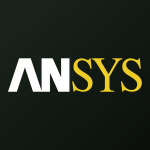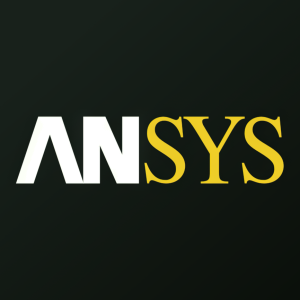Welcome to our dedicated page for Ansys news (Ticker: ANSS), a resource for investors and traders seeking the latest updates and insights on Ansys stock.
Ansys Inc. (NASDAQ: ANSS) delivers cutting-edge engineering simulation solutions powering innovation across aerospace, automotive, and semiconductor industries. This dedicated news hub provides investors and engineering professionals with essential updates on the company's strategic developments.
Track critical announcements including quarterly earnings, product launches for multiphysics simulation tools, and partnerships advancing digital twin technologies. Access verified information about Ansys' R&D initiatives in computational fluid dynamics (CFD) and cloud-based simulation platforms that shape industry standards.
Our curated collection features official press releases alongside analysis of major acquisitions and leadership updates. Stay informed about innovations in electric vehicle simulation systems and semiconductor design validation tools that demonstrate Ansys' technical leadership.
Bookmark this page for real-time updates on ANSYS's market-moving developments and in-depth coverage of how its simulation software enables next-generation engineering breakthroughs worldwide.
Ansys (NASDAQ: ANSS) has achieved a breakthrough in computational fluid dynamics (CFD) simulation using NVIDIA GH200 Grace Hopper Superchips. The company successfully ran its largest-ever Fluent CFD simulation, achieving a 110x speed acceleration that reduced runtime from four weeks to just six hours. The test, conducted at the Texas Advanced Computing Center, used 320 GH200 Superchips to solve a 2.4-billion-cell automotive aerodynamics simulation. This performance is equivalent to approximately 225,390 CPU cores, with a single GH200 chip matching nearly 1,408 CPU cores when scaled to 32 GPUs. The advancement enables faster, higher-fidelity simulations while maintaining predictive accuracy, benefiting industries like automotive, aerospace, and semiconductor manufacturing.
Vertiv (NYSE: VRT) is partnering with Ansys (NASDAQ: ANSS) to transform their data center cooling systems design process. The collaboration leverages Ansys' digital engineering technology, specifically the optiSLang optimization framework and Minerva simulation management system, to accelerate development and delivery of customized heat exchanger coils. This technology enables both experts and non-experts to access automated simulations, reducing development time and eliminating designer-to-engineer handoffs. The implementation aims to improve scalability, enable faster decision-making, and reduce go-to-market timelines for Vertiv's cooling solutions, particularly for AI-enabled infrastructure.
WEG has developed the revolutionary W80 AXgen industrial electric motor using Ansys (NASDAQ: ANSS) simulation solutions. The motor achieves significant weight reduction, from 1,498 kg to 51 kg for a 220 kW power output model, while maintaining performance. WEG utilized multiple Ansys tools including Mechanical, Fluent, Granta, and Electronics for development.
The W80 AXgen features axial flux technology, offering higher power density and specific torque compared to traditional radial flux motors. Available in 5.5 kW to 220 kW single configuration and up to 440 kW in stackable configuration, it's designed for industrial applications like air compressors, water pump systems, and generators.
Ansys (NASDAQ: ANSS) reported strong Q3 2024 financial results with revenue of $601.9 million, up 31% year-over-year. The company achieved GAAP earnings per share of $1.46 and non-GAAP EPS of $2.58, with operating profit margins of 26.8% (GAAP) and 45.8% (non-GAAP). Annual Contract Value (ACV) grew 18% to $540.5 million. The company closed an $88 million contract in the high-tech industry. The pending acquisition by Synopsys is expected to close in first half 2025, subject to regulatory approvals. Due to this transaction, Ansys has suspended quarterly earnings calls and guidance.
IonQ (NYSE: IONQ) and Ansys (Nasdaq: ANSS) have announced a strategic partnership to integrate quantum computing into the $10B computer-aided engineering (CAE) industry. The collaboration aims to accelerate simulation processes, expand design exploration, and reduce product development timelines. Ansys will gain access to quantum infrastructure for testing, while IonQ will utilize Ansys' multiphysics technology to design next-generation quantum computers. The partnership focuses on making quantum simulation accessible to both expert and non-expert users, potentially revolutionizing the CAE market through enhanced computational capabilities.
Ansys (NASDAQ: ANSS) received four TSMC 2024 OIP Partner of the Year awards for excellence in design enablement. The recognition highlights Ansys' achievements in multiphysics analysis solutions for advanced silicon processes and 3D-IC technologies. The awards specifically acknowledge joint development in: multiphysics analysis incorporating mechanical stress analysis, power integrity solutions for N2P and A16 processes, COUPE enablement for multi-die systems, and RF design migration automation. The collaboration between TSMC and Ansys aims to address complex design challenges in AI, HPC, and photonics silicon systems.
ANSYS, Inc. (NASDAQ: ANSS) has announced that it will release its third quarter 2024 earnings on Wednesday, November 6, 2024, after market close. Due to the pending acquisition by Synopsys, Inc., Ansys has suspended quarterly earnings calls and no longer provides quarterly or annual guidance. The earnings press release and 10-Q filing will be available on the investor section of the Ansys website.
The Synopsys acquisition of Ansys, announced on January 15, 2024, is expected to close in the first half of 2025, subject to regulatory approvals and closing conditions. This merger aims to create a leader in silicon to systems design solutions by combining Synopsys' semiconductor electronic design automation with Ansys' simulation and analysis portfolio.
Faraday Technology is expanding its use of Ansys technology to enhance its capabilities in developing advanced designs for multi-die 2.5D/3D-ICs, critical for AI, IoT, and 5G applications. Faraday will use Ansys RaptorX™ on-chip electromagnetic modeling solution to optimize interposer and multi-die designs, supporting better memory bandwidth, signal integrity, and performance of end applications.
The addition of RaptorX into Faraday's design flow will increase precision and efficiency in the development process, enabling predictively accurate EM modeling and analysis for advanced 3D-IC products. This will improve design fidelity, enhance performance and reliability, and accelerate time-to-market. Faraday's expanded use of Ansys technology aims to empower customers to explore more robust design options for innovative products.
Ansys (NASDAQ:ANSS) has entered into a multi-year agreement with Liebherr Group to implement an enterprise simulation strategy and model-based engineering approach. This collaboration aims to maximize simulation value through software democratization across Liebherr's sites, driving better product design strategies, reducing overall testing, and speeding up time-to-market.
The partnership extends Liebherr's 35-year engagement with Ansys across its product portfolio, strengthening the digital thread. Ansys simulation enables detailed virtual models describing all physical and functional aspects of Liebherr products, covering various domains including mechanical, fluid dynamics, electronics, and safety analysis. CADFEM Germany GmbH, an Ansys Apex Channel Partner, provides support through training, user support, and consulting services.
This initiative is particularly significant for Liebherr-Aerospace and Transportation SAS, one of Liebherr's largest divisions, which has launched a digital transformation program to implement a model-based enterprise approach and achieve digital continuity across the entire product lifecycle.
Ansys (NASDAQ: ANSS) and TSMC have expanded their collaboration to leverage AI for advancing 3D-IC design and develop next-generation multiphysics solutions for advanced semiconductor technologies. The partnership aims to enhance productivity in designing 3D integrated circuits through AI-driven solutions and automation. Key developments include:
1. Integration of Ansys optiSLang and RaptorX for optimized channel design, reducing EM simulations.
2. Collaboration with Synopsys on an AI-assisted RF migration flow.
3. Expansion of RedHawk-SC Electrothermal platform for 3D-IC thermal and stress analysis.
4. Joint support for the latest version of 3Dblox.
5. Development of a comprehensive workflow for TSMC's COUPE (Compact Universal Photonics Engine).
6. Enablement of RedHawk-SC Electrothermal for TSMC's new A16 silicon process.
These advancements aim to improve design productivity, reduce costs, and accelerate time-to-market for semiconductor products in AI, HPC, and high-speed data communication.


